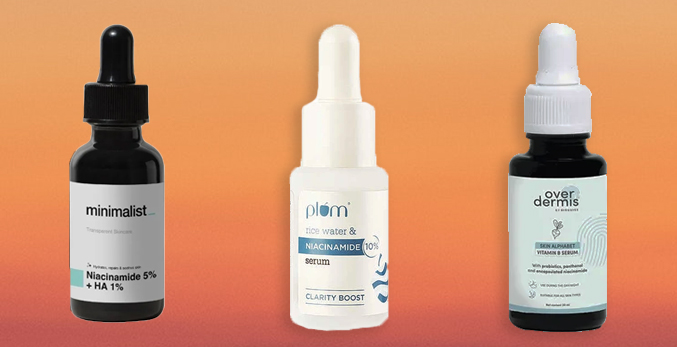
Everything you need to know about minimising your pores
Pore care 101 is now in session
People with dry skin have their issues. But one thing they don’t have to worry too much about is pore care. Combination and oily-skinned folk try everything from face masks to strong astringents in the hopes that they’ll somehow work some magic and seal up our pores.
I’ve spent hours in front of the mirror squeezing, poking and prodding at my skin. My teen years of ‘experimentation’ had left me with enlarged pores, congested skin and tiny bumps across my forehead that I just couldn’t get rid of. The more I squeezed at my acne, the more I’d end up causing scarring on my face.
It doesn’t help that my constant social media scrolling only showed me spotless skin covered in filters, blurred to perfection. I have to keep reminding myself that normal skin doesn’t look like that. And after a certain point, no matter how much I try, my pores are going to remain on the larger side of the scale. Not only because of my poor lifestyle choices and oily skin but my genes too.
“Pore size is predetermined by genetics. Studies show that fairer and dry skin tend to have smaller pores whereas darker and oily skin tend to have large pores,” says Dr Madhuri Agarwal, dermatologist and founder of Yavana Aesthetics Clinic. “You can’t change the size of your pores, just like you can’t change your height.”
You’ve probably come across at least one post online about closing up your pores with cold water and opening them up with facial steaming. But that doesn’t make much sense to experts like Agarwal. “Pores don’t have doors to close and open them. Pores can dilate and shrink due to the clogging of pores by excess oil production.”
I could be dunking my face in a bowl of ice water every morning and it’ll make little to no difference. Please do not put an ice cube directly on your skin. You’re doing more harm and good.

Regardless of their size, the pores on our faces are there for a reason. They’re small openings home to hair follicles and sebaceous glands that release oils to keep your skin protected and moisturised, and sweat to cool you off and get rid of toxins.
Agarwal adds that there are factors that can influence pore size and change how they appear. Some hormonal changes and environmental factors, but namely ageing and sun damage that breaks down collagen which maintains the elasticity and integrity of our pores. The build-up of sebum, dirt and grime can cause congestion in our pores, leading to breakouts and making our pores look bigger than they are.
While no direct link has been made between fitness, diet and our pore size, Agarwal says that “consumption of high carbohydrate, sugary foods can lead to the release of insulin-like growth factor, increased oil production and the appearance of enlarged pores. Zinc and antioxidant-containing foods strengthen elasticity of skin and pores.” Focusing on maintaining a balanced diet and exercise regime can help overall skin health. Having that cake, cookie and papdi chaat every now and then is fine too, don’t be too hard on yourself.
Our pore care starter pack includes pro tips and skincare ingredients you can incorporate into your routine to help refine skin texture and pore size. That is, working with your skin’s natural abilities and make-up to keep your pores clean and minimise their appearance.
Salicylic acid
A beta-hydroxy acid (BHA), salicylic acid gently exfoliates your face by going deep into your pores. It breaks up dead skin cells that may be clogging your pores, clears out bacteria and gets all that gunk out of your skin.
This then reduces shininess and the enlarged appearance of your pores. The highest concentration is 2% but it works well at a lower dose as well, a better choice if you have more sensitive skin. You can apply it topically as a serum, a wash-off cleanser or a cream on the areas you want to treat. Stick to using it a maximum of twice a week, especially in the beginning of your pore care regimen.

Niacinamide
Niacinamide has multiple amazing benefits for your skin, including helping build the lipid barrier while ceramides are the lipids that form the barrier.
The ingredient has been studied for its many benefits like evening out our skin tone, hydration, reducing the appearance of enlarged pores by regulating sebum production and stimulating collagen production. It can cause some redness and flushing for first time users, so experts recommend starting at a lower concentration and incorporating it slowly into your pore care routine, starting with once a week.

Retinoids/Retinol
“Retinol improves the cell turnover and collagen production that helps to tighten the pore structure,” says Agarwal.
Vitamin A or retinol is a fickle ingredient. If you’re using it for pore care start with a low dosage once a week. Pay attention to how your skin tolerates it and over the next few weeks and months, you can build up your tolerance and use it more often.
The overuse of retinol can cause serious skin damage, irritation and redness that can take months to recover from. If you’re using retinol, cut back on your exfoliation and let this ingredient be the star of your routine.

Clay masks
Clay masks have one primary purpose – to soak excess oil and sebum simmering on our faces. Once a week is more than enough to clear out our pores without overdoing it. You can add it to your pore care regimen twice if you feel your skin really needs it and is over oily.
You don’t want to let the mask completely dry down (best to follow what the product box advises) but just enough to get the job done. Remember to follow up with a moisturiser to maintain your skin’s moisture needs.
Dr Niketa Sonavane, of Ambrosia Aesthetics, suggests her favourite. “Try the Aztec Secrets Indian Healing Clay Deep Pore Cleansing mask twice a week.”

Double cleansers
A double cleanse involves using a pre-cleanse, such as an oil cleanser or cleansing balm to better break down sebum, sunscreen and makeup before you go in with your usual face wash.
Double cleansing ensures there’s no product leftover that could potentially stick around and congest your pores. Gently work the product onto dry skin to dissolve the layers of dirt and chemical formulas that have settled on your face. Most pre-cleanses then emulsify into a milky texture when you go in with water and you can massage and wash away all the leftovers.

Sun protection
“Sunscreen application is a great preventive skincare habit for large pores as it reduces the impact of sun damage on collagen breakdown,” says Agarwal.
Dermatologist Dr Kiran Sethi recommends we apply about 1-2 tablespoons to effectively protect our face and neck. “The stronger the barrier, the better the sun protection,” she says. Even when you’re indoors, try and apply sunscreen at least once in the day, especially if you have large windows. More so, if you’ve exfoliated your skin the night before or applied retinol.

Moisturisers
I know that when you have oily skin, the last time you want to do is use a moisturiser. It can feel heavy and suffocating. But even oily skin needs hydration and moisturise to live its best life. Depriving your skin is only going to make it produce more oil to compensate. And excess sebum production can make your pores appear even larger.
Instead of ditching your moisturisers, opt for a lighter gel-cream formula. Look for ones with humectants that will keep your skin hydrated plumped up. Humectants are water-loving agents in skincare products that draw moisture to the top layer of the skin. The most common humectants you’ll find in moisturisers are glycerin, urea, butylene glycol and the ever-popular, hyaluronic acid and sodium hyaluronate. And if you’re using a product heavy on humectants, remember to apply it on a slightly damp face.

In-clinic procedures and treatments
Clinical treatments such as light chemical peels containing alpha and beta hydroxy acids can help to unclog and refine the appearance of pores. Book a consult for a dermatologist to find a treatment that will work best to get the results that you desire.
“In-clinic treatments such as microdermabrasion and a variety of lasers for collagen stimulation help to refine the pore size. Microneedling radiofrequency is another versatile in-clinic treatment to tighten pores,” adds Agarwal.
A note of caution: The products included have been personally tried by editors of Tweak India. Products work differently for different people. Always do a patch test 48 hours prior to applying it to your face and consult a professional to find a treatment plan that works best for your skin’s needs.




